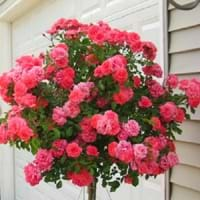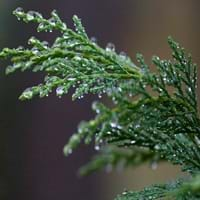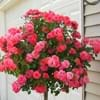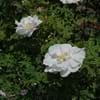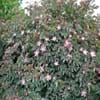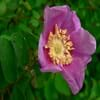Life Span
Perennial
Perennial
Type
Perennial
Needled or Scaled Evergreen
Origin
Hybrid origin
Hybrid origin
Types
Not Available
not available
Habitat
All sorts of environments
All sorts of environments, Alpine Meadows, High elevation, Hilly upland habitat
USDA Hardiness Zone
5-9
6-9
Sunset Zone
H1, H2, 6, 7, 8, 9, 12, 13, 14, 15, 16, 17, 18, 19, 20, 21, 22, 23, 24
3b, 4, 5, 6, 7, 8, 9, 10, 11, 12, 13, 14, 15, 16, 17, 18, 19, 20, 21, 22, 23, 24
Habit
Upright/Erect
Pyramidal
Flower Color
Red, Ivory
Non Flowering Plant
Flower Color Modifier
Not Available
Bicolor
Fruit Color
Non Fruiting Plant
Brown
Leaf Color in Spring
Dark Green
Green, Blue Green, Gray Green
Leaf Color in Summer
Dark Green
Green, Blue Green, Gray Green
Leaf Color in Fall
Dark Green, Yellow green, Orange Red
Green, Blue Green, Gray Green
Leaf Color in Winter
Light Green
Green, Blue Green, Gray Green
Leaf Shape
Pinnate
needle shaped
Plant Season
Spring, Summer, Fall
Spring, Summer, Fall, Winter
Sunlight
Full Sun, Partial Sun
Full Sun
Type of Soil
Loam, Sand
Clay, Loam
The pH of Soil
Acidic, Neutral
Acidic, Neutral, Alkaline
Soil Drainage
Well drained
Well drained
Bloom Time
Spring, Late Spring, Early Summer, Summer, Late Summer, Early Fall, Fall
All year
Repeat Bloomer
Not Available
No
Tolerances
Drought
Cold climate, Deer resistant
Where to Plant?
Container, Ground, Pot
Ground
How to Plant?
Cuttings
Hardwood Cuttings, Transplanting
Plant Maintenance
Medium
Medium
Watering Requirements
Average Water Needs
Average Water Needs
In Summer
Lots of watering
Lots of watering
In Spring
Moderate
Moderate
In Winter
Average Water
Average Water
Soil pH
Acidic, Neutral
Acidic, Neutral, Alkaline
Soil Type
Loam, Sand
Clay, Loam
Soil Drainage Capacity
Well drained
Well drained
Sun Exposure
Full Sun, Partial Sun
Full Sun
Pruning
Remove damaged leaves, Remove dead branches, Remove dead leaves
Prune for size control, Prune if you want to improve plant shape, pruning needed for strong structure, Remove damaged leaves, Remove dead branches, Remove dead leaves
Fertilizers
All-Purpose Liquid Fertilizer
All-Purpose Liquid Fertilizer, slow-release fertilizers
Pests and Diseases
Beetles, Black Spot, Caterpillars, Downy mildew, Mosaic viruses, Powdery mildew, Rust, Scale insects, Thripes
Canker, Root rot, Stigmina needle blight
Plant Tolerance
Drought
Cold climate, Deer resistant
Flower Petal Number
Double
Single
Edible Fruit
Not Available
No
Foliage Texture
Medium
Fine
Foliage Sheen
Glossy
Matte
Invasive
Not Available
No
Self-Sowing
Not Available
No
Attracts
Birds, Butterflies
Birds
Aesthetic Uses
Showy Purposes
Formal Garden, Ornamental use, Showy Purposes, Woodland margins
Beauty Benefits
Not Available
Not Available
Environmental Uses
Air purification
Air purification
Medicinal Uses
Not Available
No Medicinal Use
Part of Plant Used
Flowers
Not Available
Other Uses
Oil is used in perfume, soaps, creams, etc.
Acts as a natural source of rain water for birds and insects., deer resistant, Used as Christmas Tree
Used As Indoor Plant
Yes
No
Used As Outdoor Plant
Yes
Yes
Garden Design
Container, Cutflower, Feature Plant, Foundation, Mixed Border, Topiary / Bonsai / Espalier
Feature Plant, Hedges, Mixed Border, Screening, Wind Break
Botanical Name
Rosa Andeli
X CUPRESSOCYPARIS leylandii
Common Name
Double Delight Rose, Hybrid Tea Rose
Leylandii
In Hindi
Double Delight Rose
Leyland cypress
In German
Double Delight Rose
Leyland-Zypresse
In French
Double Delight Rose
Cyprès de Leyland
In Spanish
Double Delight Rose
Cupressus leylandii
In Greek
Double Delight Rose
Leyland Cypress
In Portuguese
Prazer dobro Rosa
Cipreste-de-leyland
In Polish
Double Delight Rose
Cyprysowiec Leylanda
In Latin
Double Delight Rose
Leyland Cypress
Phylum
Magnoliophyta
Coniferophyta
Class
Magnoliopsida
Pinopsida
Family
Rosaceae
Cupressaceae
Clade
Not Available
Not Available
Tribe
Not Available
Not Available
Subfamily
Not Available
Not Available
Number of Species
Not Available
Not Available
Importance of Double Delight Rose and Leyland Cypress
Want to have the most appropriate plant for your garden? You might want to know the importance of Double Delight Rose and Leyland Cypress. Basically, these two plants vary in many aspects. Compare Double Delight Rose and Leyland Cypress as they differ in many characteristics such as their life, care, benefits, facts, etc. Every gardener must at least have the slightest clue about the plants he wants to plant in his garden. Compare their benefits, which differ in many ways like facts and uses. The medicinal use of Double Delight Rose is Not Available whereas of Leyland Cypress is No Medicinal Use. Double Delight Rose has beauty benefits as follows: Not Available while Leyland Cypress has beauty benefits as follows: Not Available.
Compare Facts of Double Delight Rose vs Leyland Cypress
How to choose the best garden plant for your garden depending upon its facts? Here garden plant comparison will help you to solve this query. Compare the facts of Double Delight Rose vs Leyland Cypress and know which one to choose. As garden plants have benefits and other uses, allergy is also a major drawback of plants for some people. Allergic reactions of Double Delight Rose are Rash whereas of Leyland Cypress have Unknown respectively. Having a fruit bearing plant in your garden can be a plus point of your garden. Double Delight Rose has no showy fruits and Leyland Cypress has no showy fruits. Also Double Delight Rose is not flowering and Leyland Cypress is not flowering . You can compare Double Delight Rose and Leyland Cypress facts and facts of other plants too.
